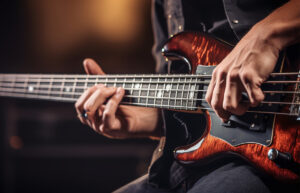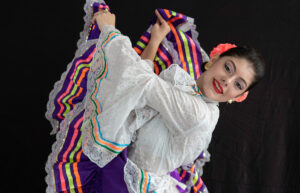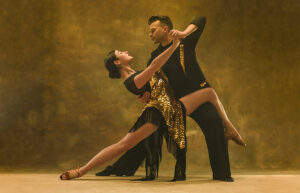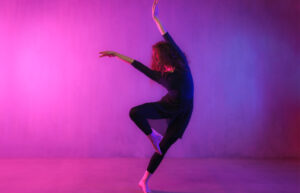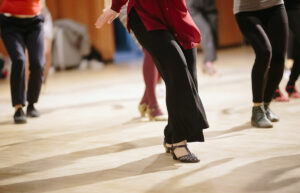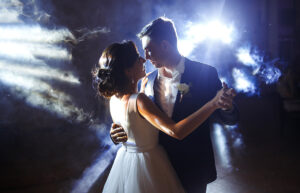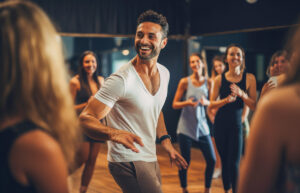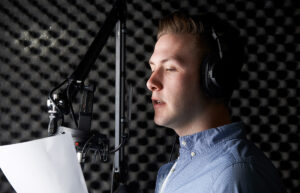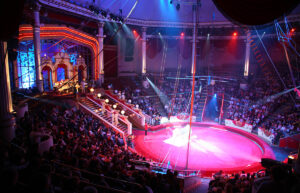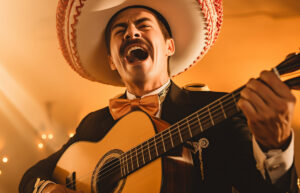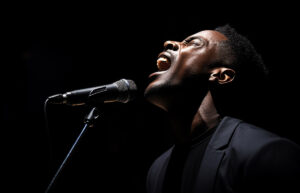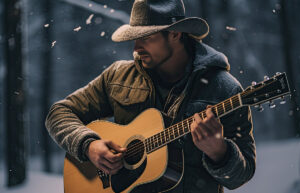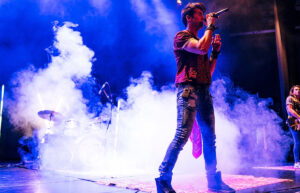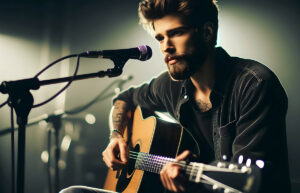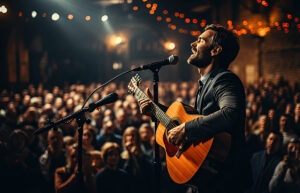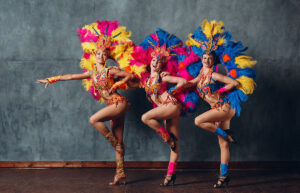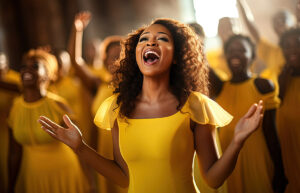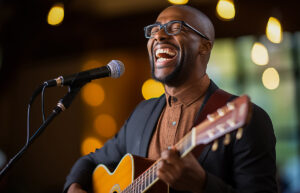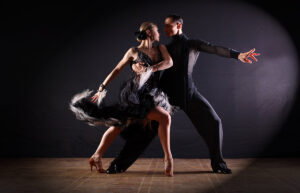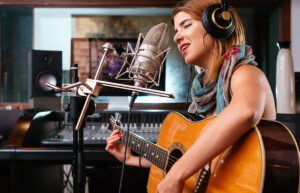How to Swing Dance: Styles, Steps & Popular Songs

Welcome to the rhythmic world of swing dance, where every step tells a story, and every movement echoes with the soulful beats of jazz! Join us as we explore how to swing dance, its vibrant history, electrifying steps, and contagious energy of swing dancing.
Welcome to TheDemoStop, now join the community!
Connect with artists, fans and producers around the world.
What is swing dance?
Swing dance is a lively and dynamic form of partnered dancing that originated in the 1920s and reached its peak popularity in the 1920s – 1940s. It emerged alongside the swing music genre, characterized by its infectious rhythm and syncopated beats.
Swing dance encompasses a variety of styles, including Lindy Hop, East Coast Swing, and the Jive, each with its own unique steps and movements. What sets learning how to swing dance apart is its emphasis on improvisation, the connection between partners, and joyful expression, making it a beloved form of social dance worldwide.
Different styles of swing dances
East Coast Swing
East Coast Swing (ECS) is a vibrant and dynamic style of swing dance that emerged on the East Coast of the United States in the 1940s. It features basic six-count patterns and a lively, playful demeanor.
Renowned for its adaptability, East Coast Swing can be danced to various tempos of swing music and is well-suited for diverse social dance settings. With foundational steps like the rock step, triple step, and a range of turns, dancers have plenty of freedom for improvisation and creative expression.
West Coast Swing
West Coast Swing (WCS) is a refined and elegant style of swing dance that originated from Lindy Hop in the 1940s on the West Coast of the United States. Danced in a slot, partners move along a linear path, enabling intricate footwork and styling.
In the journey of how to swing dance, it is essential to understand that West Coast Wwing is known for its focus on connection, technique, and musical interpretation, making it a hit in both competitive and social dance settings.
The Hustle
The Hustle, a disco dance that rose to fame in the 1970s, especially during the disco era, is danced to the rhythmic tunes of disco music. With its steady beat and syncopated rhythms, it boasts a unique Latin-inspired flair, often showcasing partners executing spins, turns, and flashy arm movements.
Its popularity soared after the movie “Saturday Night Fever” was released in 1977, starring John Travolta, which prominently featured this dance style and catapulted it into the mainstream.
The Jive
The Jive, a spirited form of swing dance, emerged in the United States in the 1930s and found its way to Europe during the 1940s and 1950s, where it gained widespread popularity. Known for its lively, bouncing movements and energetic, syncopated rhythm, the jive combines elements of jitterbug and swing dancing, with dancers executing kicks, flicks, and intricate footwork variations.
Typically accompanied by upbeat rock and roll or swing music, the Jive is a beloved choice in both competitive ballroom dance competitions and social dance gatherings.
The Lindy Hop
The Lindy Hop is a vibrant and improvisational form of swing dance that originated in Harlem, New York City, in the late 1920s and early 1930s. It is often considered the grandfather of all swing dances and is known for its infectious energy, aerials, and acrobatic movements.
The Lindy Hop is characterized by its unique combination of eight-count and six-count patterns, allowing for endless variations and creativity on the dance floor. It evolved from a fusion of African American, European, and jazz dance styles, reflecting the diverse cultural influences of its time.
Beginner tips for learning swing dances
Basic swing step
To start how to swing dance, maintain a relaxed posture with your weight slightly forward on the balls of your feet. Begin with the basic footwork: take a step back on your left foot, followed by a triple step (step, step, step), moving forward on your right-left-right foot sequence.
Focus on the timing and rhythm, highlighting the “quick-quick-slow” pattern of the steps. Keep a subtle bounce in your movements, staying flexible and attuned to the music. Focus on leading or following with your body movement rather than relying solely on your arms.
Welcome to TheDemoStop, now join the community!
Connect with artists, fans and producers around the world.
Underarm turn
To start the underarm turn, lift your left arm (for leads) or follow your partner’s lead (for follows) to make a clear path. As your partner steps forward on their right foot, guide them with your right hand (for leads) or follow their lead with your left hand (for follows) as they pivot under your arm.
Maintain connection and momentum throughout the turn to ensure a smooth rotation. Keep your steps small and precise, allowing your partner to complete the turn comfortably without overextending their movements. Practice leading or following the underarm turn with different timing variations, such as initiating it on counts 1-2 or 5-6 of the basic swing step.
Side pass
To begin, stand in a closed dance position, facing your partner with a comfortable arm’s length distance between you. As you rock, step back on your left foot, gently extend your right arm (for leads), or follow your partner’s lead (for follows) to create an opening to your right side.
Step to the side with your right foot, allowing your partner to pass by you on your right side as they step to their left. Maintain connection and frame with your partner’s hand for a clear and consistent lead or follow. To complete the side pass, return to the closed dance position by stepping forward on your left foot and reconnecting with your partner.
Swing out
Start in a closed dance position, standing facing your partner with a comfortable arm’s length distance between you. Begin the swing out by leading with your body movement, generating a rotational energy to your left.
As you rock, step back on your left foot, open up your frame, and make space for your partner to step forward on their right foot. Lead your partner to rotate away from you as you step to the side with your right foot, allowing them to pass by you on your left side. Complete the swing out by returning to an open dance position, stepping forward on your left foot, and maintaining a relaxed connection with your partner’s hand.
Circle
To start, stand in a closed dance position, facing your partner with a comfortable arm’s length between you. Begin the circle by leading with your body movement, generating a circular energy to your left. Rock step back on your left foot while gently guiding your partner to step forward on their right foot to initiate the rotation.
Maintain connection and momentum as you both move in a circular path, stepping to the side with your right foot and allowing your partner to complete the rotation. To finish, return to the closed dance position by stepping forward on your left foot and reconnecting with your partner.
Popular swing dance songs
“In the Mood” by Glenn Miller
“In the Mood” is an iconic swing jazz instrumental piece recorded by Glenn Miller and his orchestra in 1939. It features a lively, upbeat tempo with catchy melodies and vibrant horn sections, making it a staple in swing dance playlists.
The song’s infectious energy and driving rhythm make it perfect to learn how to swing dance, including Lindy Hop or East Coast Swing dancing, inspiring dancers to move with joy and enthusiasm.
“Sing, Sing, Sing” by Benny Goodman
“Sing, Sing, Sing” is a famous swing jazz composition performed by Benny Goodman and his orchestra, recorded in 1937. It is known for its dynamic arrangement, featuring powerful drum solos, energetic brass sections, and infectious swing rhythms.
The song’s driving tempo and infectious groove make it a favorite among swing dancers, often accompanying high-energy Lindy Hop or Charleston routines on the dance floor. Its iconic drum solo by Gene Krupa is particularly celebrated and often inspires dancers to showcase their own rhythmic improvisations.
“Jumpin’ at the Woodside” by Count Basie
“Jumpin’ at the Woodside” is a classic swing jazz composition performed by Count Basie and his orchestra, recorded in 1938. It is characterized by its swinging rhythm, catchy melodies, and lively call-and-response exchanges between the different sections of the band.
The song’s infectious groove and energetic tempo make it a popular choice for swing dancers, providing ample opportunity for improvisation, footwork variations, and playful interactions between partners on the dance floor. “Jumpin’ at the Woodside” is often featured in Lindy Hop, East Coast Swing, and West Coast Swing dance events, where dancers can showcase their skills while grooving to its irresistible swing beat.
Welcome to TheDemoStop, now join the community!
Connect with artists, fans and producers around the world.
Conclusion
What is swing dance?
Swing dance is a partnered dance style characterized by its energetic and rhythmic movements, originating in the 1920s alongside swing music. Learning how to swing dance involves mastery of styles and some tips.
Different styles of swing dances
- East Coast Swing
- West Coast Swing
- The Hustle
- The Jive
- The Lindy Hop
Beginner tips for learning swing dance
- Basic swing step
- Underarm turn
- Side pass
- Swing out
- Circle
Popular swing dance songs
- “In the Mood” by Glenn Miller
- “Sing, Sing, Sing” by Benny Goodman
- “Jumpin’ at the Woodside” by Count Basie
FAQs
What is swing dancing?
Swing dance is a partnered dance style originating in the 1920s, characterized by energetic movements and syncopated rhythms, often danced to swing music.
What are beginner tips for learning swing dances
- Basic swing step
- Underarm turn
- Side pass
- Swing out
- Circle
Is it hard to learn to swing dance?
Swing dance can vary in difficulty depending on the style and individual, but with practice and dedication, it is generally accessible to beginners.
Which are popular swing dance songs?
- “In the Mood” by Glenn Miller
- “Sing, Sing, Sing” by Benny Goodman
- “Jumpin’ at the Woodside” by Count Basie
Do I need a partner to learn swing dance steps?
While having a partner can enhance the learning experience, learning swing dance steps is not always necessary, as many steps and techniques can be practiced solo.
How can I find swing dance classes or events in my area?
You can find swing dance classes or events in your area by searching online on websites like Meetup, and Facebook events, or by checking local dance studios and community centers.


